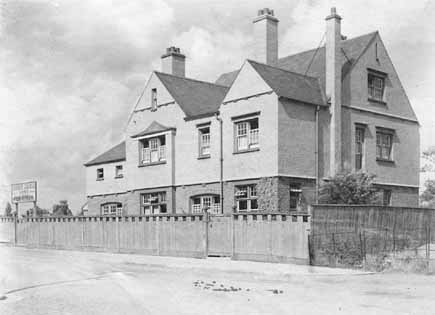Harrow Home For Girls
Harrow Home For GirlsHarrow, Middlesex (1883 - 1939) Opening in December 1883, the Harrow Home was the third girls' home to be established by the Society. The building, which had been in the Society's possession since September, was only a few minutes walk from Harrow railway station and stood in pleasant surroundings with fruit trees in the garden. At the rear of the house was an extensive lawn, which made an ideal playground for the children. At first the Harrow Home could only accommodate 17 girls, but after repairs and alterations, space was made for eight more. Following further expansion, the Home could accommodate 36 girls (aged 7-12). The Matron, Miss Jackson, made sure the girls attended the Parish Day and Sunday school and taught them needlework in the evenings. Miss Enthoven worked as the first Honorary Secretary of the Home, until Miss K Peers replaced her in 1886. Miss Joyce held the same post from 1891, but she left in 1897 to be superseded by Mrs Roseveare in the following year. The Home was too small to meet increasing demand for places, and the Society decided to build a new house in 1890. They employed the services of Mr Peach, the Society's architect, and the building was constructed under the supervision of Mr C Brightman of Watford. The foundation stone was laid on 10 December 1890 by Mrs Creighton, wife of the late Bishop of London. The formal opening ceremony for the new building (Oldfield House, Harrow View) was held on 16 July 1901, with the Bishop of Kensington presiding. All the girls moved into their house with the assistance of their new matron, Miss Tyte, and the under-matron, Miss Adamson. In 1902 the Harrow Home was renamed St Saviour's Home for Girls. Constructed of grey and red brick and three floors high, the new house was much more spacious than the old Home. On entering the front door, the matron's room was situated on the right, with the dining room adjoining. The ground floor also included a recreation room, and a kitchen with a scullery attached. Upstairs were five bedrooms, three for the girls and one each for the Matron and Assistant Matron. In the roof space there was a sick-room for girls that were poorly, and a box-room that was used for storage. Perhaps the most notable member of staff in these years was Miss Makins who worked at the Home from 1898 to 1919. She worked in various positions, starting out as the Home's Lady Manager before becoming the Honorary Secretary in 1902. Other secretaries of the Home include Miss Faulder (1905-1909), and Miss Griffiths who superseded her. In 1939 the girls were evacuated to Weedon, Northamptonshire and then to Ware, Hertfordshire. After the Second World War St Saviour's returned to Harrow, and stayed as a girls' home until 1972. Between 1972 and 1975 the home served as a hostel for teenagers, before being used for five years as a mixed age residential home. In 1980 St Saviour's made the first move towards its final role as a residential unit for local children with learning disabilities, and worked in close co-operation with Harrow Social Services. |




